Day-628
Quiz-summary
0 of 5 questions completed
Questions:
- 1
- 2
- 3
- 4
- 5
Information
DAILY MCQ
You have already completed the quiz before. Hence you can not start it again.
Quiz is loading...
You must sign in or sign up to start the quiz.
You have to finish following quiz, to start this quiz:
Results
0 of 5 questions answered correctly
Your time:
Time has elapsed
You have reached 0 of 0 points, (0)
Categories
- Not categorized 0%
- 1
- 2
- 3
- 4
- 5
- Answered
- Review
-
Question 1 of 5
1. Question
1. Consider the following statements regarding Lake Retba, recently seen in the news:
1. It is situated a few kilometers away from the Dakar Region in Senegal.
2. The pink colour of the lake is imparted by the higher concentration of nitrates in it.
Which of the statements given above is/are correct?Correct
Answer: A
Context- Senegal’s pink lake (lake Retba) is on the verge of disappearing, threatened by the excessive artisanal salt mining, dilution of its waters with a low salinity that is incompatible with the development of the green algae and accumulation of extremely high levels of nitrates in its waters.
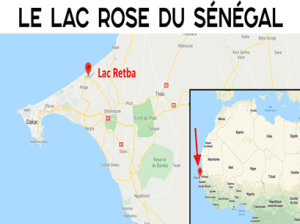
Explanation-
Statement 1 is correct: Lake Retba, better known as Lac Rose (the Pink Lake), is located around 35km from the city of Dakar, Senegal. It sits in a depression with a shoreline 6.5 metres below sea level.The lake is isolated from the sea by about 1 km of sand dunes. Its fresh water comes from the seasonal water table in the dunes, which are higher than the lake. Thus, the sea provides most of the lake’s water and all of its salt.
Statement 2 is incorrect: The Pink Lake is one of the main tourist destinations in the Dakar region, primarily because of the pink colour of its waters. The pink coloration is due to the proliferation of halophilic green algae (living in a salty environment), Dunaliella salina, which contain red pigments. The alga is associated with halophilic bacteria of the genus Halobacterium. This microscopic alga’s resistance to salt comes from its high concentration of carotenoid pigments, which protect it from light, and its high glycerol content.Incorrect
Answer: A
Context- Senegal’s pink lake (lake Retba) is on the verge of disappearing, threatened by the excessive artisanal salt mining, dilution of its waters with a low salinity that is incompatible with the development of the green algae and accumulation of extremely high levels of nitrates in its waters.

Explanation-
Statement 1 is correct: Lake Retba, better known as Lac Rose (the Pink Lake), is located around 35km from the city of Dakar, Senegal. It sits in a depression with a shoreline 6.5 metres below sea level.The lake is isolated from the sea by about 1 km of sand dunes. Its fresh water comes from the seasonal water table in the dunes, which are higher than the lake. Thus, the sea provides most of the lake’s water and all of its salt.
Statement 2 is incorrect: The Pink Lake is one of the main tourist destinations in the Dakar region, primarily because of the pink colour of its waters. The pink coloration is due to the proliferation of halophilic green algae (living in a salty environment), Dunaliella salina, which contain red pigments. The alga is associated with halophilic bacteria of the genus Halobacterium. This microscopic alga’s resistance to salt comes from its high concentration of carotenoid pigments, which protect it from light, and its high glycerol content. -
Question 2 of 5
2. Question
2. Consider the following pairs:
Regions mentioned in news – Countries where they are located
1. Bashkortostan – Afghanistan
2. Sistan Baluchistan – Iran
3. Kurdistan – Iraq
4. Idlib – Lebanon
How many of the above pairs are correctly matched?Correct
Answer. B
Context- Places in News due to conflicts/protests.
Explanation- Only Pairs 2 and 3 are correctly matched.
Bashkortostan Region- Russia

Places in News and their location Reason for being in news
Bashkortostan Region- Russia Hundreds of protesters have clashed with police in the Russian republic of Bashkortostan in a rare display of public outrage against the prison sentence given to a local eco-activist Faiz Alsynov.
Sistan Baluchistan- Iran


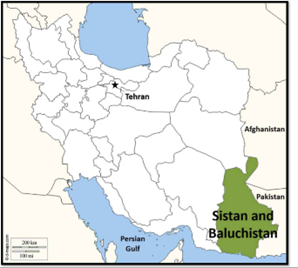
Terrorist group Jaish-al-Adl (A sunni Islamist group) claimed an attack on the police station in Sistan Baluchistan region recently.
This terrorist group backs the separatist movement in Sistan Baluchistan region which has a majority of Sunni population.
Kurdistan- Iraq, Turkey, Iran, Syria


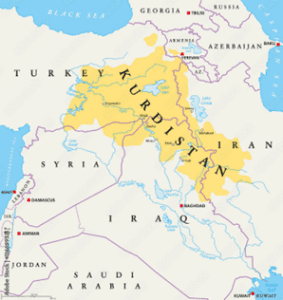
Iran’s Revolutionary Guards claimed the recent attacks on the spy headquarters of Israel in Iraq’s semi-autonomous Kurdistan region.
Islamic State claimed responsibility for two explosions in Iran this month that killed nearly 100 people and wounded scores at a memorial for top commander Qassem Soleimani.
Idlib – Syria
Iran has also attacked the military bases of terror groups based in Idlib, Syria. This region is controlled by the Jihadists and rebels.


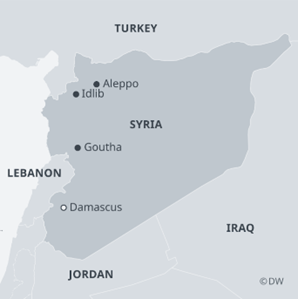 Incorrect
Incorrect
Answer. B
Context- Places in News due to conflicts/protests.
Explanation- Only Pairs 2 and 3 are correctly matched.
Bashkortostan Region- Russia


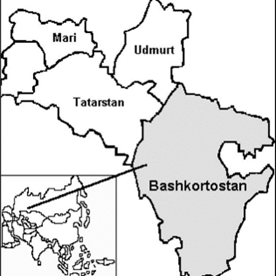
Places in News and their location Reason for being in news
Bashkortostan Region- Russia Hundreds of protesters have clashed with police in the Russian republic of Bashkortostan in a rare display of public outrage against the prison sentence given to a local eco-activist Faiz Alsynov.
Sistan Baluchistan- Iran



Terrorist group Jaish-al-Adl (A sunni Islamist group) claimed an attack on the police station in Sistan Baluchistan region recently.
This terrorist group backs the separatist movement in Sistan Baluchistan region which has a majority of Sunni population.
Kurdistan- Iraq, Turkey, Iran, Syria



Iran’s Revolutionary Guards claimed the recent attacks on the spy headquarters of Israel in Iraq’s semi-autonomous Kurdistan region.
Islamic State claimed responsibility for two explosions in Iran this month that killed nearly 100 people and wounded scores at a memorial for top commander Qassem Soleimani.
Idlib – Syria
Iran has also attacked the military bases of terror groups based in Idlib, Syria. This region is controlled by the Jihadists and rebels.



-
Question 3 of 5
3. Question
3. In the context of temple entry movements during freedom struggle, consider the following statements regarding Kalaram Temple Satyagraha:
1. It was started under the guidance of Dr. B. R. Ambedkar.
2. Mahatma Gandhi urged depressed classes to withdraw from Kalaram Temple Satyagraha.
3. Satyagraha was not successful in its objective of gaining entry to the temple for depressed classes.
How many of the statements given above are correct?Correct
Answer: C
Explanation:
Context:
The Prime Minister of India recently visited the Kalaram Temple on the banks of the Godavari in the Panchavati area of the city.
• In March 1930, Dr. B.R. Ambedkar launched the famous Kalaram Temple Entry Satyagraha at Nasik, which became a landmark in the Dalit liberation movement in the history of modern Maharashtra.
• Kalaram Temple Entry Satyagraha was a movement from the masses and involved active participation of the people. Hence statement 1 is correct.
• From 3rd March 1930, the squatting started around the temple. The Bombay Government imposed Article 144 of Civil Procedure Code around the temple. On April 7th, the day of Ram Navami, Dr. Ambedkar led a procession of two hundred volunteers.
o On 9th April, the caste Hindus made an attack on the satyagrahis There were several attempts made to conciliate the issue. In the beginning, B.G Kher, Swami Anand the Congress leaders from Bombay, supported the cause of Ambedkar.
• Meanwhile Gandhiji started the nationwide Civil Disobedience Movement. He did not want any other movement at the same time. In his article in Young India he mentioned Kalaram Temple Entry Satyagraha and urged depressed classes to give up the entry movement. The first phase of Satyagraha came to an end when Dr. Ambedkar gave the permission for its suspension. Hence statement 2 is correct.
• In January 1933 Dr. Subarayan’s temple entry bill was rejected in the Imperial Council. The decisions of the Bombay High Court were unfavourale to the satyagraha. Dr. Ambedkar did not give permission to restart the satyagraha in April 1933.
o When in 1934 the Satyagraha Committee wanted to start satyagrala, Dr Amedkar in his letter to Bhaurao Gaikwad expressed that he wanted to stop satyagraha permanently. He came to the decision that he would not use other temple entries. On the advice of Dr. Ambedkar, the Satyagraha Committee gave up the cause. Thus the satyagraha was not successful in its objective of gaining temple entry for depressed classes. Hence statement 3 is correct.Incorrect
Answer: C
Explanation:
Context:
The Prime Minister of India recently visited the Kalaram Temple on the banks of the Godavari in the Panchavati area of the city.
• In March 1930, Dr. B.R. Ambedkar launched the famous Kalaram Temple Entry Satyagraha at Nasik, which became a landmark in the Dalit liberation movement in the history of modern Maharashtra.
• Kalaram Temple Entry Satyagraha was a movement from the masses and involved active participation of the people. Hence statement 1 is correct.
• From 3rd March 1930, the squatting started around the temple. The Bombay Government imposed Article 144 of Civil Procedure Code around the temple. On April 7th, the day of Ram Navami, Dr. Ambedkar led a procession of two hundred volunteers.
o On 9th April, the caste Hindus made an attack on the satyagrahis There were several attempts made to conciliate the issue. In the beginning, B.G Kher, Swami Anand the Congress leaders from Bombay, supported the cause of Ambedkar.
• Meanwhile Gandhiji started the nationwide Civil Disobedience Movement. He did not want any other movement at the same time. In his article in Young India he mentioned Kalaram Temple Entry Satyagraha and urged depressed classes to give up the entry movement. The first phase of Satyagraha came to an end when Dr. Ambedkar gave the permission for its suspension. Hence statement 2 is correct.
• In January 1933 Dr. Subarayan’s temple entry bill was rejected in the Imperial Council. The decisions of the Bombay High Court were unfavourale to the satyagraha. Dr. Ambedkar did not give permission to restart the satyagraha in April 1933.
o When in 1934 the Satyagraha Committee wanted to start satyagrala, Dr Amedkar in his letter to Bhaurao Gaikwad expressed that he wanted to stop satyagraha permanently. He came to the decision that he would not use other temple entries. On the advice of Dr. Ambedkar, the Satyagraha Committee gave up the cause. Thus the satyagraha was not successful in its objective of gaining temple entry for depressed classes. Hence statement 3 is correct. -
Question 4 of 5
4. Question
4. With reference to the Vidyanjali scholarship programme, consider the following statements:
1. The programme is targeted to benefit meritorious students of Navodaya Vidyalaya only.
2. The scholarship would be funded by the government only.
Which of the statements given above is/are correct?Correct
Answer: A
Context: The Union Education minister has launched the Vidyanjali Scholarship Programme on 7 February 2024, which is aligned with the NEP 2020.
Explanation:
Statement 1 is correct: The initiative guarantees access to high-quality learning systems by facilitating a seamless transition from secondary to higher education and extending financial support for the meritorious Navodaya Vidyalaya students, particularly for students belonging to economically disadvantaged sections.
Statement 2 is incorrect: In addition to extending financial assistance to economically marginalized and meritorious students of Navodaya Vidyalayas, this endeavor also encourages involvement from the private sector through Corporate Social Responsibility (CSR) initiatives, thereby making way of joining forces between the government and corporates towards an educated India.
● A fintech platform was also launched, and the sponsorship will be disbursed to students through this platform as Direct Benefit Transfer (DBT).Incorrect
Answer: A
Context: The Union Education minister has launched the Vidyanjali Scholarship Programme on 7 February 2024, which is aligned with the NEP 2020.
Explanation:
Statement 1 is correct: The initiative guarantees access to high-quality learning systems by facilitating a seamless transition from secondary to higher education and extending financial support for the meritorious Navodaya Vidyalaya students, particularly for students belonging to economically disadvantaged sections.
Statement 2 is incorrect: In addition to extending financial assistance to economically marginalized and meritorious students of Navodaya Vidyalayas, this endeavor also encourages involvement from the private sector through Corporate Social Responsibility (CSR) initiatives, thereby making way of joining forces between the government and corporates towards an educated India.
● A fintech platform was also launched, and the sponsorship will be disbursed to students through this platform as Direct Benefit Transfer (DBT). -
Question 5 of 5
5. Question
5. Consider the following statements:
1. The National Centre for Good Governance (NCGG) is an autonomous institution under the Ministry of Personnel, Public Grievances and Pensions.
2. The NCGG serves as a think tank for governance and policy reforms, cutting across administrative, social, economic, and financial spheres.
3. The NCGG is managed under the overall superintendence and direction of the Governing Body, which is headed by the CEO of NITI Aayog.
How many of the above statements are correct?Correct
Answer: B
Context: The National Centre for Good Governance (NCGG) achieved a significant milestone in February 2024, by completing the first Two-Week Advanced Leadership Development Programme on Public Policy and Governance for Senior Civil Servants of the African Region in Delhi in partnership with the Ministry of External Affairs.
Explanation:
Statement 1 is correct: The National Centre for Good Governance (NCGG) was set up in 2014 by the Government of India as an apex–level autonomous institution under the Ministry of Personnel, Public Grievances and Pensions. The Centre traces its origin to the National Institute of Administrative Research (NIAR), which was set up in 1995 by the Lal Bahadur Shastri National Academy of Administration (LBSNAA), the Government of India’s topmost training institute for civil services. NIAR was subsequently rechristened and subsumed into NCGG.
Statement 2 is correct: The objectives of NCGG are:
• To be a think tank for governance and policy reforms, cutting across administrative, social, economic, and financial spheres;
• To function as a national repository of information on best practices, initiatives and methodologies that promote good governance, e-governance, innovation and change management within the government and its parastatal organizations;
• To initiate and participate in action research and capacity-building on various aspects of regulatory and development administration, public policy, governance, and public management at the national, state, and local levels;
• To engage in provision of consultancy services in and outside the country.
• To advise on key issues in governance and develop synergy across various ministries/ departments of the Government of India and various state governments;
• To promote sharing and replication of innovative ideas and best practices in governance;
• To interact with national and international organizations, in and outside the government, engaged in research and capacity building in these spheres;
• To raise resources in support of the activities of ‘the society’ and maintain and manage a fund to which shall be credited;
• Any other work to be entrusted by the Government.
Statement 3 is incorrect: the NCGG are managed under the overall superintendence and direction of the Governing Body, which is headed by the Cabinet Secretary.Incorrect
Answer: B
Context: The National Centre for Good Governance (NCGG) achieved a significant milestone in February 2024, by completing the first Two-Week Advanced Leadership Development Programme on Public Policy and Governance for Senior Civil Servants of the African Region in Delhi in partnership with the Ministry of External Affairs.
Explanation:
Statement 1 is correct: The National Centre for Good Governance (NCGG) was set up in 2014 by the Government of India as an apex–level autonomous institution under the Ministry of Personnel, Public Grievances and Pensions. The Centre traces its origin to the National Institute of Administrative Research (NIAR), which was set up in 1995 by the Lal Bahadur Shastri National Academy of Administration (LBSNAA), the Government of India’s topmost training institute for civil services. NIAR was subsequently rechristened and subsumed into NCGG.
Statement 2 is correct: The objectives of NCGG are:
• To be a think tank for governance and policy reforms, cutting across administrative, social, economic, and financial spheres;
• To function as a national repository of information on best practices, initiatives and methodologies that promote good governance, e-governance, innovation and change management within the government and its parastatal organizations;
• To initiate and participate in action research and capacity-building on various aspects of regulatory and development administration, public policy, governance, and public management at the national, state, and local levels;
• To engage in provision of consultancy services in and outside the country.
• To advise on key issues in governance and develop synergy across various ministries/ departments of the Government of India and various state governments;
• To promote sharing and replication of innovative ideas and best practices in governance;
• To interact with national and international organizations, in and outside the government, engaged in research and capacity building in these spheres;
• To raise resources in support of the activities of ‘the society’ and maintain and manage a fund to which shall be credited;
• Any other work to be entrusted by the Government.
Statement 3 is incorrect: the NCGG are managed under the overall superintendence and direction of the Governing Body, which is headed by the Cabinet Secretary.

